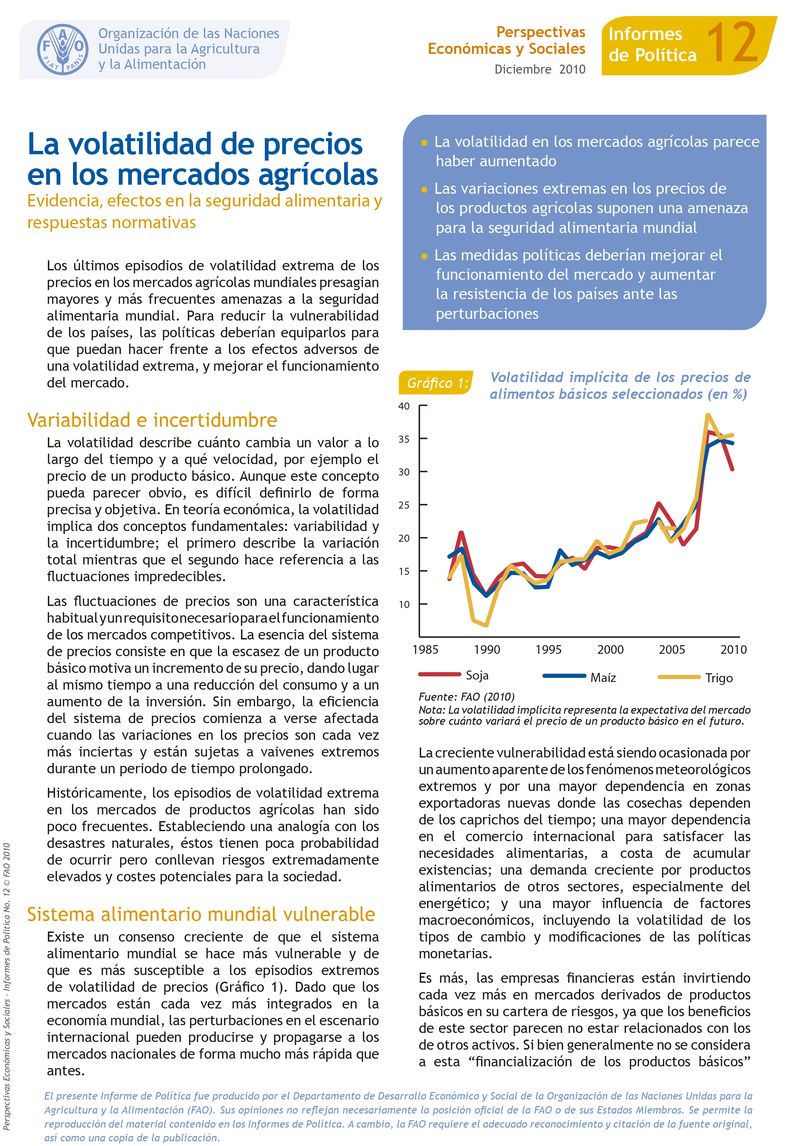Focal point
Location
The Food and Agriculture Organization of the United Nations leads international efforts to defeat hunger. Serving both developed and developing countries, FAO acts as a neutral forum where all nations meet as equals to negotiate agreements and debate policy. FAO is also a source of knowledge and information. We help developing countries and countries in transition modernize and improve agriculture, forestry and fisheries practices and ensure good nutrition for all. Since our founding in 1945, we have focused special attention on developing rural areas, home to 70 percent of the world's poor and hungry people.
Members:
Resources
Displaying 2676 - 2680 of 5074Suivi de l’utilisation de l’eau agricole au niveau des pays
As water becomes scarcer in many countries, governments increasingly have to deal with the considerable challenges of water management. Sound information on water vailability and use is key to shaping water policies that aim to provide equitable and sustainable use of increasingly scarce water resources. Accurate information on agricultural water withdrawal is particularly important to planners and decision-makers involved in water management, as agriculture represents the largest water us er in many countries, representing about 70 percent of total withdrawal worldwide.
Género y derecho a la tierra
Aumentar el acceso de las mujeres a la tierra es crucial para combatir el hambre y la pobreza. Sin embargo, las disparidades de género en el acceso a la tierra siguen siendo notables en muchos países, con independencia de su nivel de desarrollo.
INFORMES DE POLITICA 12: La volatilidad de precios en los mercados agrícolas
Los últimos episodios de volatilidad extrema de los precios en los mercados agrícolas mundiales presagian mayores y más frecuentes amenazas a la seguridad alimentaria mundial. Para reducir la vulnerabilidad de los países, las políticas deberían equiparlos para que puedan hacer frente a los efectos adversos de una volatilidad extrema, y mejorar el funcionamiento del mercado.
National Gender Profile of Agricultural Households 2010
Cambodia has a land area of 181 035 square kilometers and a population of almost 14 million people (2008). In 2008, about 82 percent of the households lived in rural areas. A large majority of these households engage in rice- based agriculture, collection of forest products and livestock production. The agricultural sector generates about 32 percent of the Gross Domestic Product and provides employment to about 80 percent of the country’s labour force. The sector is dominated by small farm households who are mainly engaged in subsistence production.
Rural women's access to land and property in selected countries: Progress towards achieving the aims of the Convention on the Elimination of all forms of Discrimination against Women (CEDAW) INCLUDING 2010 UPDATE
In 2010, the ILC Secretariat decided to update information contained in the 2004 publication, so as to have a new basis to work more closely with and through CEDAW at national level. The update gives more visibility to the CEDAW Committee’s Concluding Observations and, accordingly, also to the CSOs’ shadow reports feeding them. This inclusion offers a more critical and comprehensive, if preliminary, overview of the situation of rural women in selected countries. NOTE: The 2004 publication is also available through this site.










